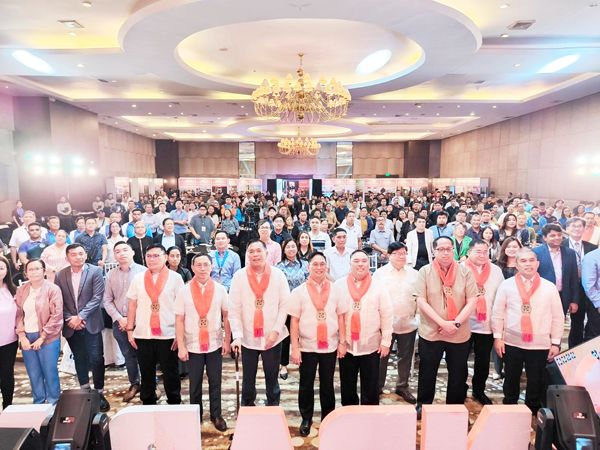ILOILO CITY – The Department of Science and Technology (DOST) stressed disaster resilience in a recent exposition in Cebu City.
“We believe that through science, technology, and innovation, resilience is possible and Filipinos can come out as disaster victors, not disaster victims,” said DOST Secretary Renato Solidum Jr.

PARTICIPANTS of the Visayas leg of the ‘Handa Pilipinas: Innovation in Climate and Disaster Resilience Nationwide Exposition’ organized by the Department of Science and Technology (DOST) in Cebu City. (Tara Yap)
Solidum was unable to attend the Visayas leg of the DOST “Handa Pilipinas: Innovation in Climate and Disaster Resilience Nationwide Exposition” this week as his flight was cancelled due to super typhoon “Carina.”
In his virtual keynote address, Solidum underscored the need to understand hazards and risks of particular areas in Western Visayas, Central Visayas, and Eastern Visayas.
Solidum emphasized to participating local government units (LGUs) that science and technology-based solutions are essential to reduce the risks of disasters.
“I dream that Handa Pilipinas becomes a culture to every Filipino family, every local government, every business, and every institution,” said Solidum, who conceptualized Handa Pilipinas last year.
Handa Pilipinas was initially aimed to promote GeoRisk Philippines, a DOST initiative led by attached agency of the Philippine Institute of Volcanology and Seismology (PHIVOLCS) to share hazard exposure and risk information.
DOST Undersecretary for Regional Operations Sancho Mabborang and DOST Undersecretary for Special Concerns Teodoro Gatchalian also delivered messages.
Joining them were DOST Regional Directors Tristan Abando for Central Visayas, Rowen Gelonga for Western Visayas, and John Glenn Ocaña for Eastern Visayas.
Several in-depth talks were also held during the event, among them, Unmasking DRRM Hoaxes: The Hunt for Truth Against Social Media Misinformation; Major Disasters in Visayas: Key Insights and Lessons Learned; Voices from the Frontline: DRRM Needs of Visayas; Maghanda: Communicating Hazards, Risks, and Early Warning; Harnessing Data and Information, Communication Technology: Innovations in DRRM Simulation and Modeling; and Climate Resilience and Enhancing Resilience through Science, Technology, and Innovation.